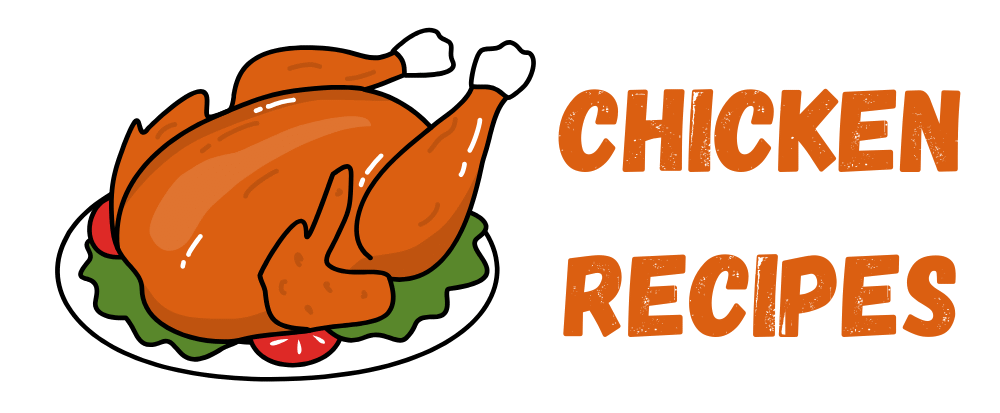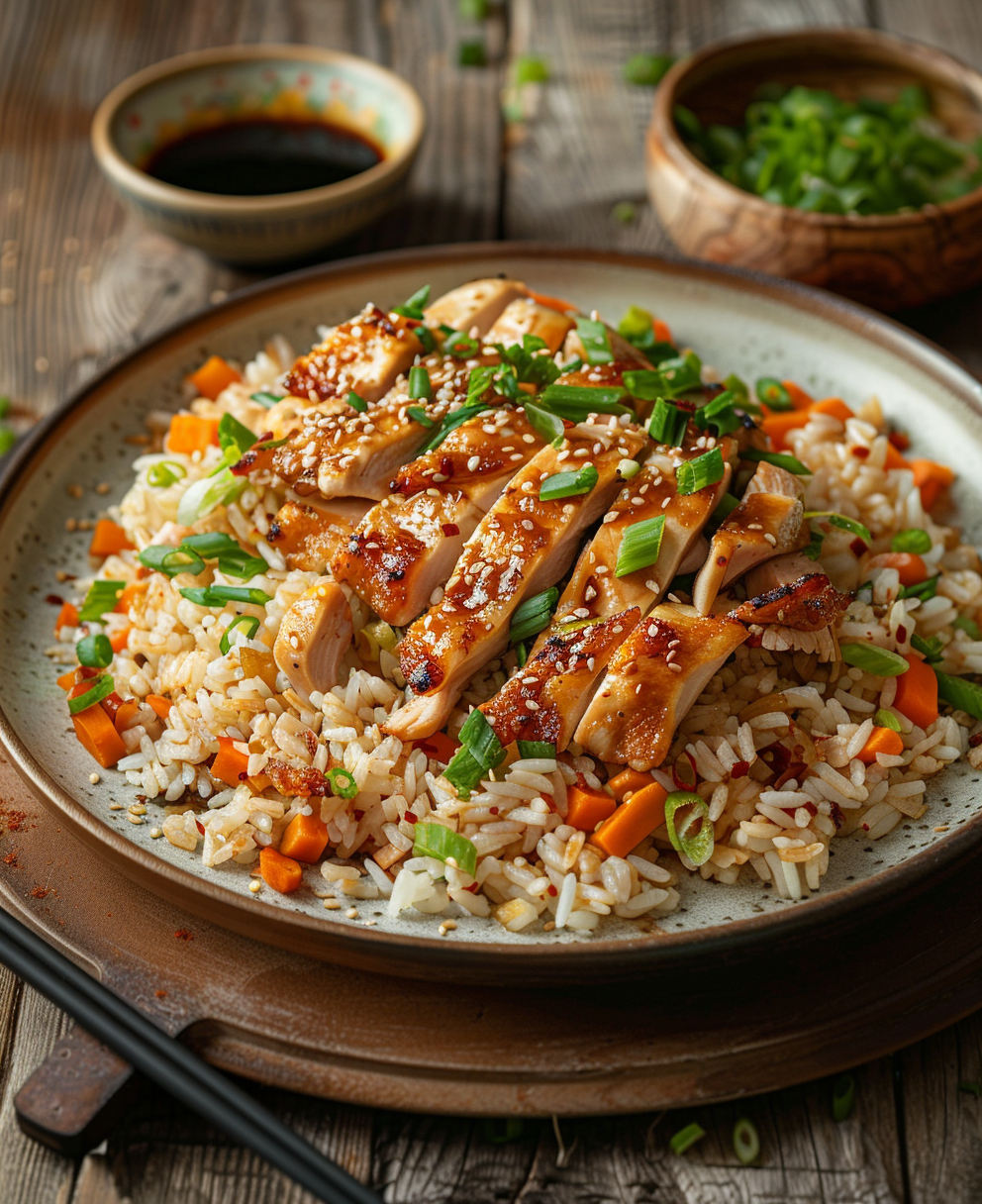
Why I Love Comfort Food and Chicken Long Rice
I’ve always had a soft spot for comfort food. There’s something about a warm, hearty meal that makes everything feel just a little bit better. Whether it’s a cold day or I’m celebrating with friends, dishes like chicken long rice bring people together. This Hawaiian classic is more than just food—it’s a tradition.
Chicken long rice holds a special place in Hawaii’s food culture. It’s a staple at family gatherings, potlucks, and luaus. The dish combines tender chicken, aromatic ginger, savory shoyu, and clear noodles to create a comforting bowl of goodness. If you’ve never tried it, you’re in for a treat. In this article, I’ll share its origins, how to make it (including vegan options), and tips on serving and storing it. You’ll also learn what makes this dish so unique and why it’s loved by so many.
What Makes Chicken Long Rice Unique?
So, what exactly is chicken long rice? At first glance, the name might be a bit misleading. Despite the word “rice” in its title, this dish doesn’t actually use traditional rice. Instead, it features clear noodles made from mung bean starch, which are often mistaken for rice because of their shape and texture. These noodles soak up all the flavors of the broth, making each bite rich and satisfying.
Here’s a quick breakdown of the key ingredients:
- Chicken: Tender pieces of chicken give the dish its protein-packed base.
- Ginger: Fresh ginger adds a zesty kick that balances the dish’s savory notes.
- Green onions: These add freshness and a pop of color.
- Shoyu: A splash of soy sauce brings umami depth to the broth.
- Clear noodles: Often called “cellophane noodles,” these are the star of the show.
One common question people ask is: What is chicken long rice made of? It’s a mix of simple, wholesome ingredients that come together to create something magical. The combination of ginger, shoyu, and chicken creates a comforting flavor profile that feels both familiar and exotic. And don’t worry—if you’re looking for plant-based options, I’ll share a delicious vegan chicken long rice recipe later in this guide.
Clearing Up Confusion: What Is Long Rice?
Let’s address another frequent question: What is long rice? As I mentioned earlier, there’s no actual rice in this dish. The term “long rice” refers to the clear noodles used in the recipe. These noodles are thin, translucent, and have a chewy texture when cooked. They’re sometimes labeled as “glass noodles” or “bean thread noodles” in stores. So, if you’re searching for ingredients, keep an eye out for those names too.
The name “long rice” might stem from the noodle’s resemblance to grains of rice stretched out into long strands. Whatever the reason, it’s a quirky detail that adds charm to this beloved dish. People love chicken long rice because it’s filling, flavorful, and easy to customize. Whether you’re adding extra ginger for spice or tossing in some veggies for color, the possibilities are endless.
A Taste of History: The Origins of Chicken Long Rice
Now let’s talk about where this dish comes from. If you search for chicken long rice origin, you’ll find ties to Hawaii’s diverse culinary heritage. The dish likely has roots in Okazuya-style meals, which were popularized by Japanese immigrants who came to Hawaii in the late 1800s. Okazuya shops were small eateries that served affordable, home-cooked meals to workers. Over time, local flavors and ingredients blended with these traditional recipes, giving birth to dishes like chicken long rice.
Today, it’s a favorite among locals and visitors alike. You’ll often see it served at plate lunches alongside mac salad and kalua pig. Its popularity speaks to its versatility and comforting nature. Whether you’re enjoying it at a family dinner or ordering it from a restaurant, chicken long rice offers a taste of Hawaii’s rich cultural tapestry.
Why This Dish Stands Out
There’s a reason chicken long rice has stood the test of time. For starters, it’s incredibly easy to prepare. Even beginner cooks can whip up a batch without much hassle. Plus, it’s budget-friendly—you don’t need fancy ingredients to make it shine. Another perk? It’s freezer-friendly. If you’re wondering can you freeze chicken long rice?, the answer is yes! Just store it in an airtight container, and it’ll keep for weeks.
But perhaps the biggest draw is its adaptability. Want to try a twist? Add tomato sauce for a tangy kick. Need a low-calorie option? Swap chicken for tofu. Looking for side dish ideas? Pair it with steamed veggies or a fresh salad. Whatever your preferences, this dish can be tailored to suit your needs.
In the next sections, I’ll walk you through step-by-step recipes, including a mouthwatering shoyu chicken long rice version and a plant-based alternative. We’ll also cover nutritional info, calorie counts, and storage tips. By the end, you’ll have everything you need to make this Hawaiian classic your own.
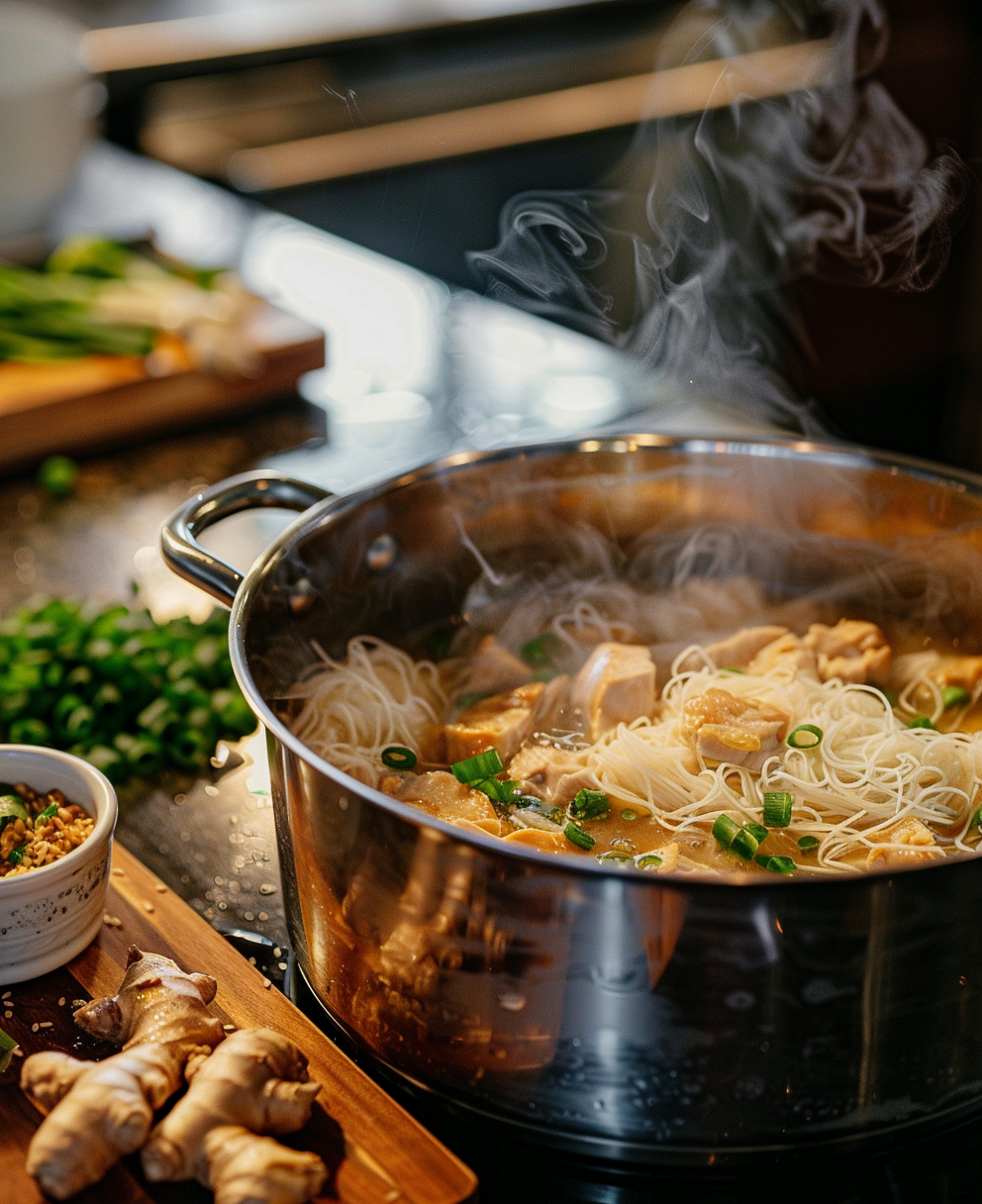
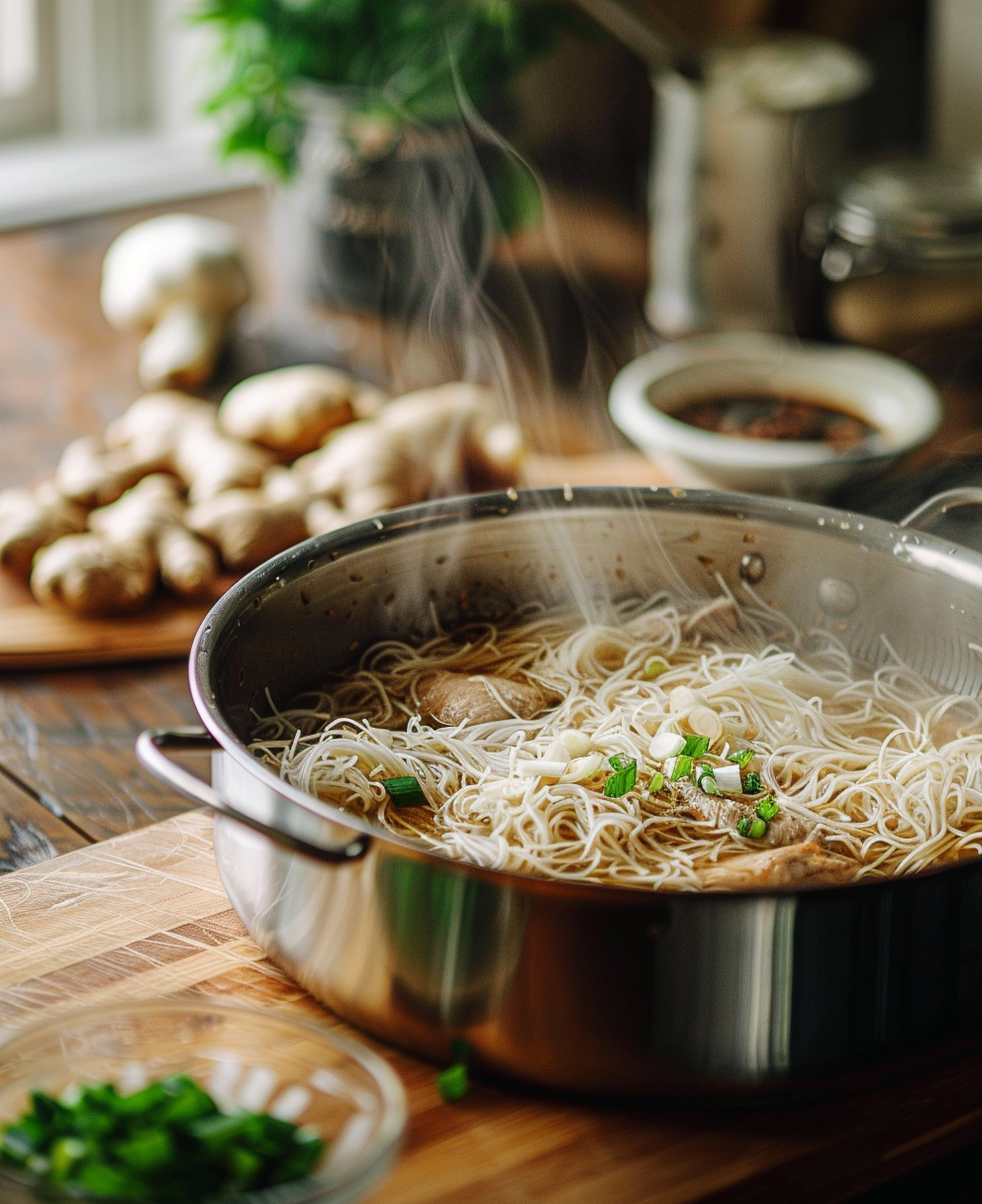
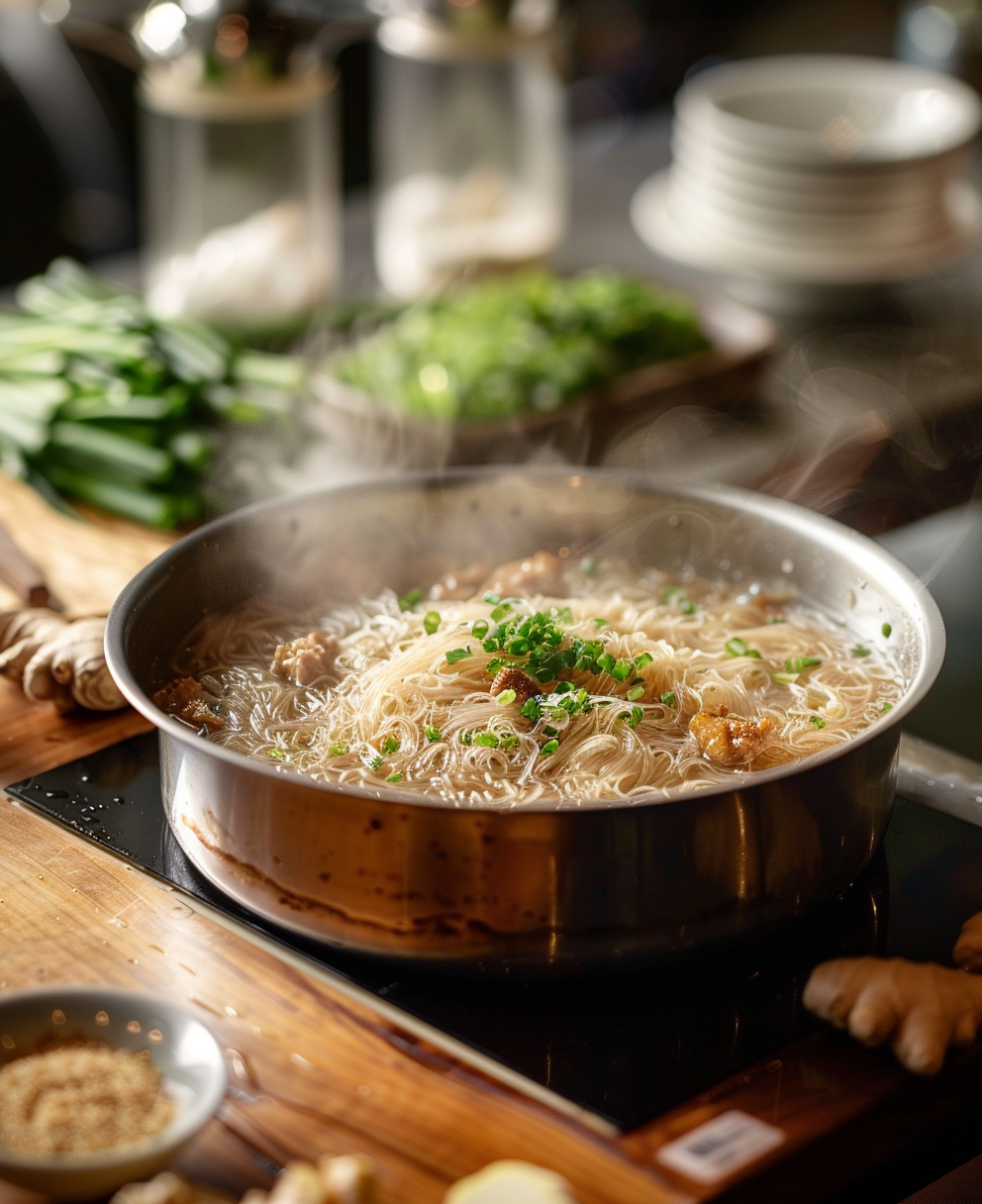
How to Make Chicken Long Rice: Recipes You’ll Love
Alright, let’s get into the fun part—actually making chicken long rice. If you’ve been wondering how to recreate this dish at home, you’re in luck. Whether you’re a fan of tradition or love experimenting with flavors, I’ve got recipes that’ll have your kitchen smelling amazing in no time. Oh, and if you’re curious about plant-based options, don’t worry—I’ve got vegans covered too.
Here’s the thing: shoyu chicken long rice recipe is a classic for a reason. It’s simple, comforting, and packed with flavor. The base ingredients are easy to find, and the steps? Super straightforward. But before we dive in, let me share a quick tip: always use fresh ginger. Trust me, powdered ginger just doesn’t cut it here. Freshness makes all the difference when it comes to infusing that zesty kick.
Traditional Shoyu Chicken Long Rice Recipe
For the traditional version, you’ll need chicken (bone-in works best), clear noodles, ginger, green onions, shoyu, garlic, and chicken broth. Start by boiling the chicken until it’s tender—this also creates a flavorful broth as a bonus. Once the chicken is cooked, shred it into bite-sized pieces. Meanwhile, soak the clear noodles in warm water until they soften, then toss them into the pot along with ginger, garlic, and shoyu. Let everything simmer together so the noodles soak up all that goodness.
By the way, if you’re looking for something creamy and hearty, check out this creamy chicken and rice soup recipe. It’s not exactly the same as chicken long rice, but it’s another cozy option for those chilly evenings.
A Twist with Tomato Sauce
Now, here’s where things get interesting. Have you ever tried chicken long rice with tomato sauce? Adding a splash of tangy tomato sauce gives the dish an unexpected depth. The sweetness of the tomatoes balances out the salty shoyu and savory chicken perfectly. Just stir in about half a cup of tomato sauce during the last few minutes of cooking. Honestly, it’s one of my favorite ways to switch things up without straying too far from the original.
Vegan Chicken Long Rice Options
What if you’re skipping meat? No problem! Making a vegan chicken long rice is easier than you think. Swap the chicken for tofu or even jackfruit—it mimics the texture of shredded chicken surprisingly well. Use vegetable broth instead of chicken broth, and you’re good to go. Funny enough, I once made this for a potluck, and no one realized it was vegan until I told them. That’s how deliciously satisfying it turned out!
If you want more inspiration, take a peek at this chicken and wild rice soup Publix recipe. While it’s not vegan, it offers some creative ideas for pairing grains and proteins.
Tips for Cooking Raw Chicken Safely
Let’s talk safety for a sec. A common question people ask is, “Can you cook raw chicken in rice?” Well, technically, yes, but there are better methods. Instead of throwing raw chicken straight into the pot with the noodles, I recommend cooking it separately first. This ensures the chicken reaches a safe internal temperature while keeping the broth clean and clear. Plus, simmering the chicken in broth enhances its flavor, which then gets absorbed by the noodles. Win-win!
Oh, and one more thing—always wash your hands and utensils after handling raw chicken. Seems obvious, right? But you’d be surprised how often folks forget. Safety first, flavor second.
Nutritional Info & Storage Tips
So, how does chicken long rice calories stack up? On average, a single serving clocks in around 300-400 calories, depending on portion size and added ingredients like oil or extra sauce. Not bad for a filling meal, huh? Most of these calories come from the protein in the chicken and the carbs in the noodles. If you’re watching your intake, consider using low-sodium shoyu or cutting back on added fats.
Speaking of leftovers, can you freeze chicken long rice? Absolutely. In fact, freezing is a great way to extend its shelf life. Just let the dish cool completely before transferring it to an airtight container. When you’re ready to reheat, thaw it overnight in the fridge and warm it gently on the stove. Easy peasy.
For short-term storage, keep the dish in the fridge for up to three days. Pro tip: store the noodles separately if possible. They tend to absorb liquid over time, which can make the dish a bit soggy. But honestly, even slightly soggy chicken long rice still tastes pretty darn good.
If you’re craving something similar but different, try this old fashioned chicken and rice casserole. It’s baked rather than simmered, offering a totally unique twist on comfort food.
Where to Find Chicken Long Rice Near Me
Not in the mood to cook? Fair enough. Sometimes, you just wanna sit back and enjoy someone else’s hard work. If you type “chicken long rice near me” into Google, you’ll likely find local Hawaiian restaurants or caterers who serve it. Farmers’ markets are another solid bet—they often feature vendors specializing in island-inspired dishes.
When I visited Maui last year, I stumbled upon a tiny food truck that served the most incredible chicken long rice. The secret? They used homemade shoyu and fresh ginger grated right in front of me. It was a game-changer. So, if you spot a Hawaiian-themed eatery nearby, give it a shot. You might discover your new favorite spot.
And hey, if you’re searching for other crowd-pleasers, don’t miss this Cracker Barrel chicken and rice recipe. It’s a Southern classic with its own charm, perfect for shaking things up.
In the end, whether you’re whipping up a batch at home or hunting down the best local version, chicken long rice is a dish worth savoring. From its humble origins to its endless adaptability, it’s proof that sometimes the simplest meals leave the biggest impression.
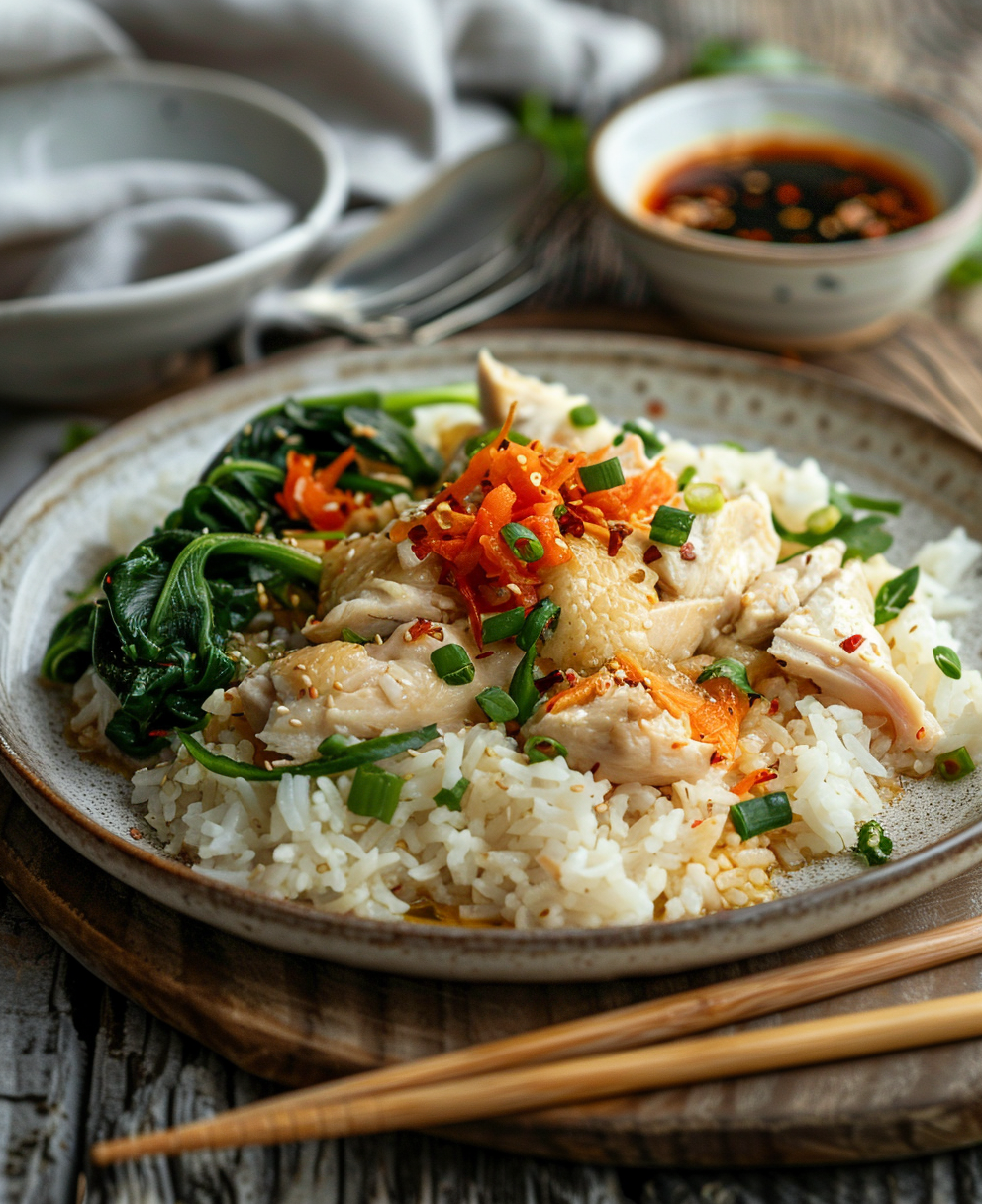
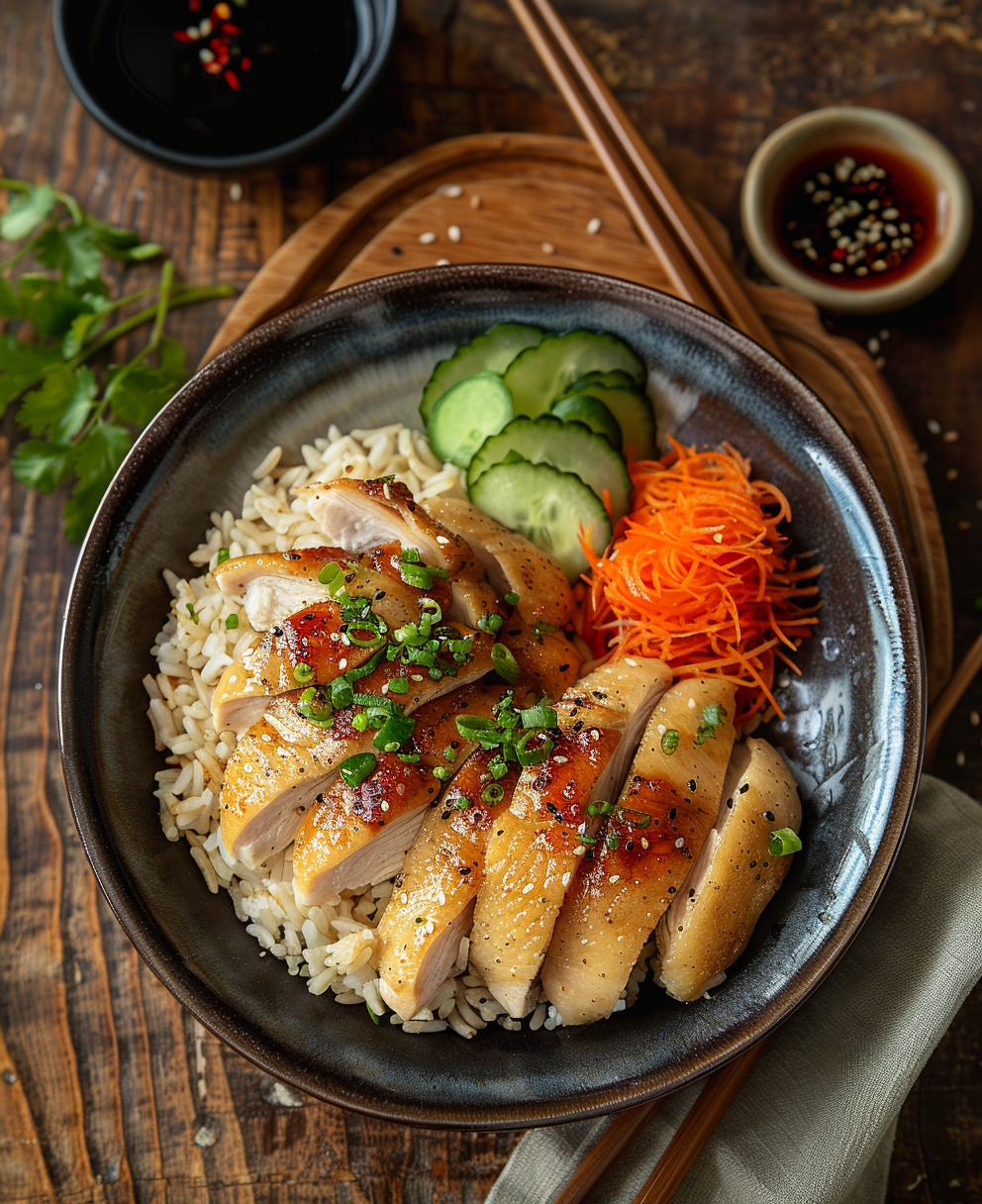
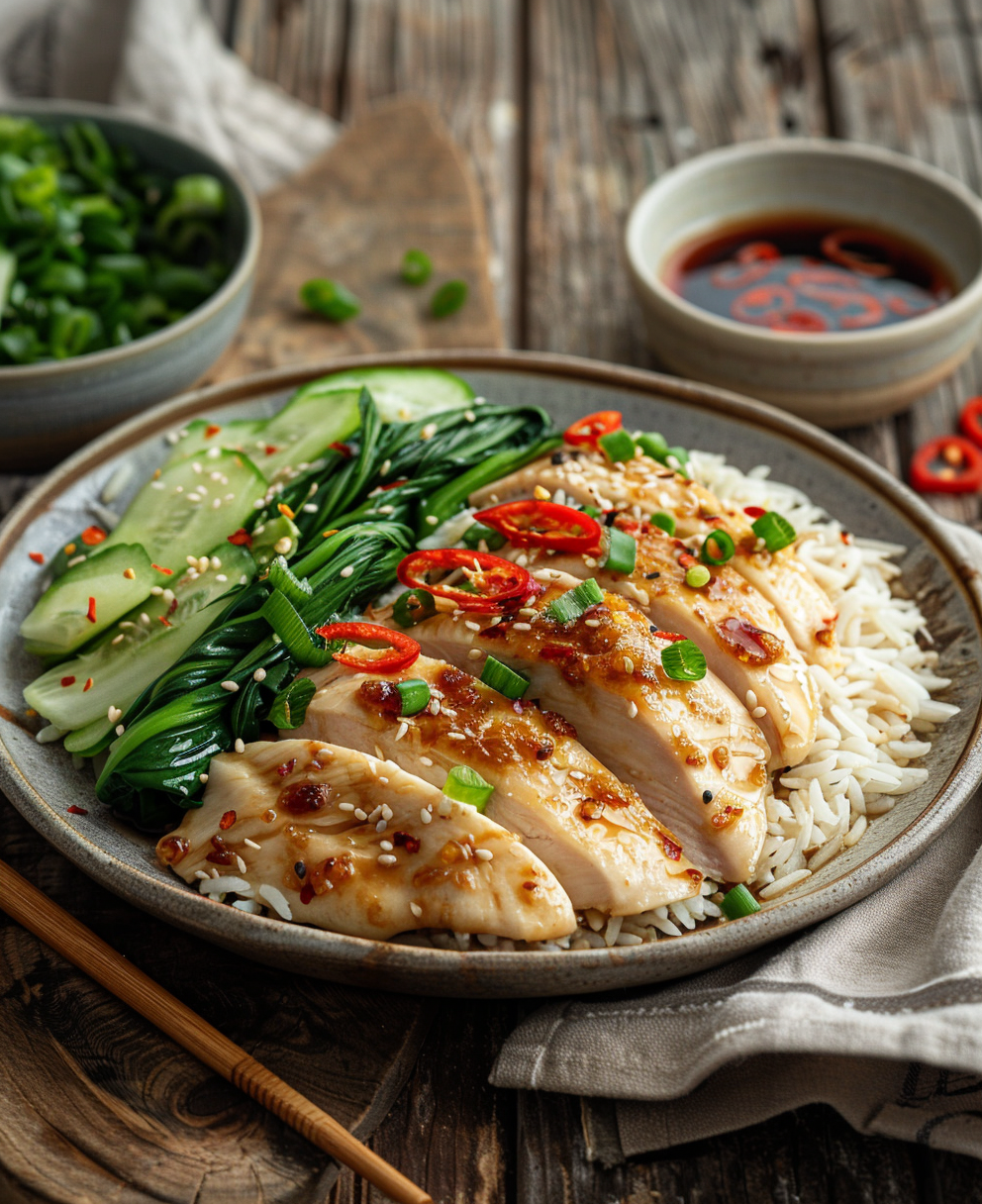
Pairing Chicken Long Rice: What Goes Best?
So, you’ve got a steaming bowl of chicken long rice ready to go—what’s next? Pairing this dish with the right sides can take it from good to absolutely unforgettable. Let me walk you through some classic and creative options that’ll make your meal pop.
When people ask, What goes with chicken long rice?, my answer usually starts with poi. If you’re not familiar, poi is a traditional Hawaiian staple made from taro root. It has a slightly tangy, creamy texture that balances the savory richness of the noodles and chicken. I remember trying it for the first time at a luau—it was love at first bite. Funny enough, poi also happens to be gluten-free, which makes it a great option if you’re catering to dietary restrictions.
Another crowd favorite is mac salad. Yep, that creamy, dreamy pasta salad you see everywhere in Hawaii. The coolness and slight sweetness of the mac salad complement the warm, gingery flavors of chicken long rice. Together, they’re basically a match made in comfort food heaven. Trust me, once you try this combo, you’ll understand why it’s a plate lunch staple.
If you’re leaning toward something lighter, steamed veggies are always a solid choice. Broccoli, carrots, or even bok choy add color, crunch, and nutrients to your plate. Plus, their mild flavors won’t overpower the dish—they just enhance it. One time, I threw in some sautéed green beans with garlic, and wow, it was a game-changer. The slight char on the beans added this smoky depth that paired beautifully with the soft noodles.
Here’s a pro tip: think about textures when pairing. The silky noodles of chicken long rice pair wonderfully with something crisp, like cucumber slices or even pickled ginger. The contrast keeps every bite interesting. Oh, and don’t forget a sprinkle of toasted sesame seeds on top for an extra layer of flavor and crunch!
Why Is It Called Long Rice?
Alright, let’s clear up one last burning question: Why is it called long rice? Spoiler alert—it’s not actually rice. As we touched on earlier, “long rice” refers to those translucent, chewy noodles made from mung bean starch. They’re often mistaken for rice because of their shape and how they soak up broth, but technically, they’re more like cellophane noodles or glass noodles.
I find it fascinating how names evolve over time. In this case, “long rice” might have stuck because the noodles resemble grains of rice stretched out into strands. Or maybe someone just thought it sounded cooler than “clear noodle soup.” Either way, it’s quirky details like these that make dishes like chicken long rice so special.
Here’s a fun tidbit: these noodles aren’t just used in Hawaiian cuisine. You’ll find them in tons of Asian-inspired dishes too, from Chinese hot pots to Vietnamese spring rolls. Their versatility is unmatched—they absorb flavors like a sponge while holding their own unique texture. Honestly, I could eat them in pretty much anything. By the way, if you haven’t tried them outside of chicken long rice, do yourself a favor and whip up a stir-fry sometime. You won’t regret it.
Frequently Asked Questions (FAQ)
Let’s wrap things up by answering some common questions folks tend to ask about chicken long rice. Think of this as your quick cheat sheet for all things long rice-related.
- What is chicken long rice made of?
It’s a mix of tender chicken, clear noodles (made from mung bean starch), ginger, green onions, shoyu, and chicken broth. Simple yet oh-so-delicious. - What goes with chicken long rice?
Poi, mac salad, steamed veggies, or even something crunchy like pickled ginger work wonders. Experiment with textures and flavors to find your perfect combo. - Can you cook raw chicken in rice?
Technically, yes, but it’s safer and tastier to cook the chicken separately before adding it to the dish. This ensures the chicken is fully cooked and the broth stays clean. - Why is it called long rice?
The name comes from the clear noodles used in the dish, which resemble long strands of rice. Despite the name, no actual rice is involved. - Can you freeze chicken long rice?
Absolutely. Just let it cool completely, store it in an airtight container, and freeze for up to a few months. Reheat gently on the stove. - Is there a vegan version of chicken long rice?
Yes! Swap chicken for tofu or jackfruit, use vegetable broth, and follow the same steps. It’s just as flavorful and satisfying. - How many calories are in chicken long rice?
A typical serving has around 300-400 calories, depending on portion size and added ingredients. Adjust seasonings like shoyu to control sodium levels. - Where can I find chicken long rice near me?
Check local Hawaiian restaurants, farmers’ markets, or caterers specializing in island-inspired dishes. Food trucks are also a great bet! - What’s the origin of chicken long rice?
It likely stems from Okazuya-style meals brought to Hawaii by Japanese immigrants. Over time, local flavors transformed it into the dish we know today. - Can I add tomato sauce to chicken long rice?
Definitely. A splash of tomato sauce adds a tangy twist that complements the savory notes of shoyu and ginger perfectly.
By now, you probably feel ready to tackle this dish head-on. Whether you stick to the classic recipe or experiment with new twists, chicken long rice is a dish that invites creativity and connection. So grab those noodles, fire up the stove, and let your kitchen be filled with the comforting aroma of ginger and shoyu. And hey, if you end up loving it—or tweaking it in a way that blows your mind—come back here and tell me about it. Sharing recipes and experiences is what makes food so magical.
Final Thoughts
Food has a way of bringing people together, and chicken long rice is no exception. Whether you’re cooking it for family, friends, or just yourself, this dish carries a warmth that goes beyond its ingredients. It’s simple, adaptable, and packed with history—a true reflection of Hawaii’s rich cultural tapestry. My hope is that you’ll give it a try, maybe even put your own spin on it, and share the joy it brings.

Chicken Long Rice
Ingredients
Equipment
Method
- Boil the chicken in water until tender to create a flavorful broth.
- Shred the cooked chicken into bite-sized pieces.
- Soak the clear noodles in warm water until softened.
- In the pot with the broth, add ginger, garlic, shoyu, and the softened clear noodles.
- Simmer everything together to allow the noodles to absorb the flavors.
- Serve hot, garnished with chopped green onions.
